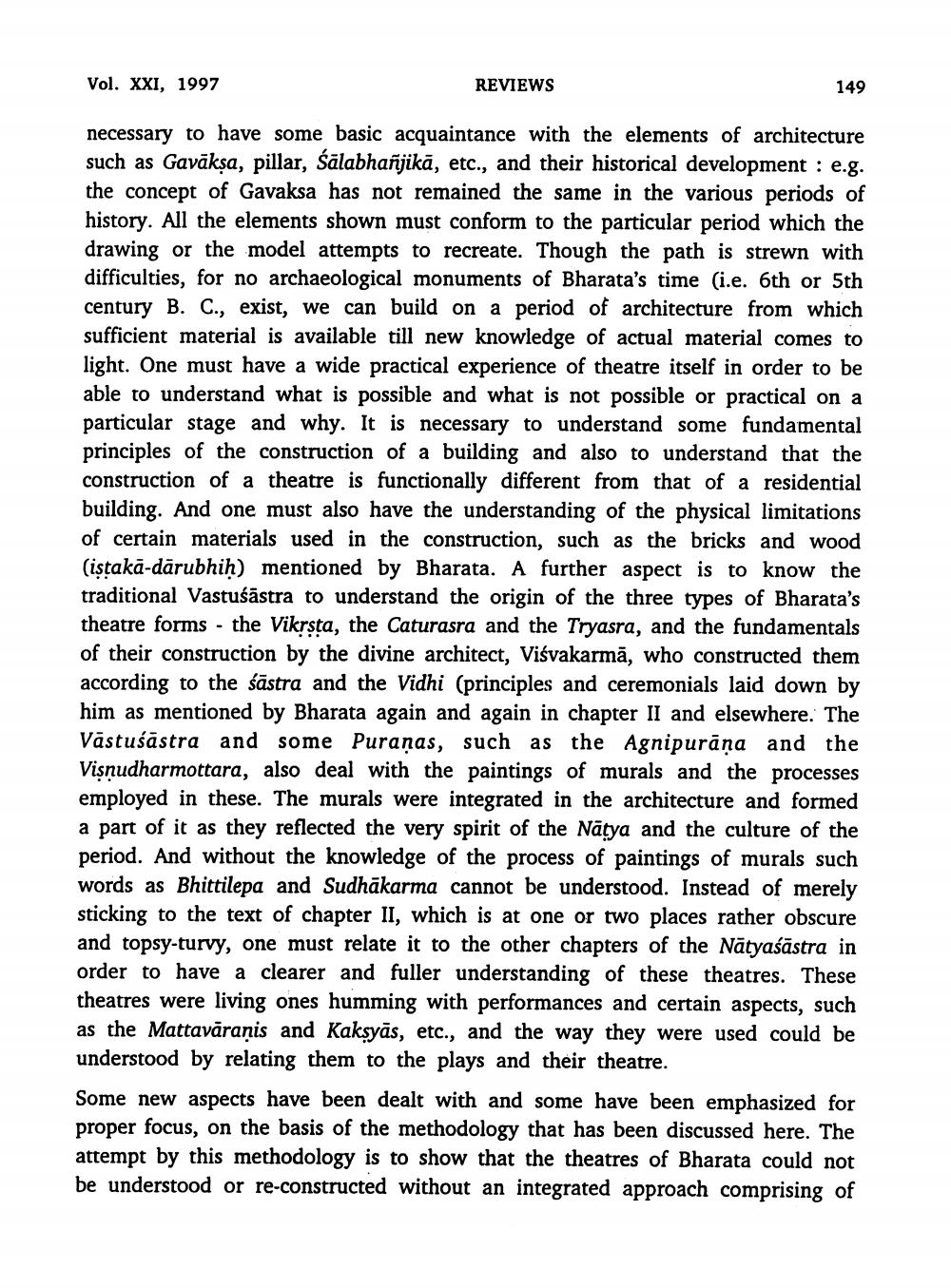________________
Vol. XXI, 1997
REVIEWS
-
149
necessary to have some basic acquaintance with the elements of architecture such as Gavākṣa, pillar, Śālabhañjikā, etc., and their historical development: e.g. the concept of Gavaksa has not remained the same in the various periods of history. All the elements shown must conform to the particular period which the drawing or the model attempts to recreate. Though the path is strewn with difficulties, for no archaeological monuments of Bharata's time (i.e. 6th or 5th century B. C., exist, we can build on a period of architecture from which sufficient material is available till new knowledge of actual material comes to light. One must have a wide practical experience of theatre itself in order to be able to understand what is possible and what is not possible or practical on a particular stage and why. It is necessary to understand some fundamental principles of the construction of a building and also to understand that the construction of a theatre is functionally different from that of a residential building. And one must also have the understanding of the physical limitations of certain materials used in the construction, such as the bricks and wood (iṣṭakā-dārubhiḥ) mentioned by Bharata. A further aspect is to know the traditional Vastuśästra to understand the origin of the three types of Bharata's theatre forms the Vikrsta, the Caturasra and the Tryasra, and the fundamentals of their construction by the divine architect, Viśvakarma, who constructed them according to the śästra and the Vidhi (principles and ceremonials laid down by him as mentioned by Bharata again and again in chapter II and elsewhere. The Västuśästra and some Puranas, such as the Agnipurāṇa and the Visnudharmottara, also deal with the paintings of murals and the processes employed in these. The murals were integrated in the architecture and formed a part of it as they reflected the very spirit of the Natya and the culture of the period. And without the knowledge of the process of paintings of murals such words as Bhittilepa and Sudhakarma cannot be understood. Instead of merely sticking to the text of chapter II, which is at one or two places rather obscure and topsy-turvy, one must relate it to the other chapters of the Natyaśästra in order to have a clearer and fuller understanding of these theatres. These theatres were living ones humming with performances and certain aspects, such as the Mattaväranis and Kakṣyās, etc., and the way they were used could be understood by relating them to the plays and their theatre.
Some new aspects have been dealt with and some have been emphasized for proper focus, on the basis of the methodology that has been discussed here. The attempt by this methodology is to show that the theatres of Bharata could not be understood or re-constructed without an integrated approach comprising of




